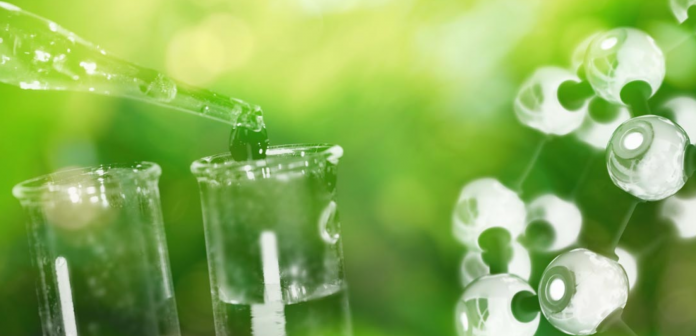The scaling of green chemistry, a driving force for change, is explained by Christian Römlein, CEO and Managing Partner of intelligent fluids
Green chemistry is based on the concept of minimising the use and generation of hazardous substances. In the past, green chemistry products always faced a similar challenge: while the environmental and social benefits were great, performance did not meet expectations in terms of (cleaning) performance.
Thankfully, that has changed. Over the last decade, green chemistry has scaled tremendously, offering new possibilities to turn away from conventional practices. Globally, it has become paramount to prioritise the reduction of environmental impact while maintaining industrial efficiency. As environmental concerns grow more pressing, the imperative of green chemistry becomes even more apparent.
This is especially the case for green cleaning products. Conventional cleaning products often aim to reduce their environmental impact by looking at packaging and recycling options, rather than focusing on the actual ingredient composition.
However, green cleaning products have emerged to revolutionise industrial cleaning. By deploying advanced formulations, these newer products cleanse effectively and align with environmental stewardship, mitigating pollution while contributing to ESG goals.
Sustainable development
So, what has changed? First and foremost, global attention on environmental impact outside of traditional CO2 emissions has increased significantly. Sustainability is understood in much broader terms than purely focusing on the “end-of-pipe” emissions. 2015 marked the adoption of the 2030 Agenda for Sustainable Development by all United Nations Member States.
At the heart of the agenda are 17 Sustainable Development Goals (SDGs). The SDGs recognise that sustainability means ending poverty through strategies that also improve health plus education, reduce equity, and spur economic growth – all while combating climate change and promoting the preservation of our oceans and forests.
This global regulatory framework – together with other pivotal regulations being agreed upon in the same year, such as the Paris Climate Agreement – ensured that businesses across the globe had a similar framework to work towards. In the case of green cleaning solutions, innovative companies had to develop less traditional ways to meet SDG goals instead of only focusing on the environmental footprint.
Responsible consumption and production
One notable instance is SDG 12, which addresses responsible consumption and production. Green cleaning products exemplify this goal by reducing the use of harmful chemicals, waste, and adopting sustainable sourcing practices.
These products prioritise non-toxic ingredients, effectively curbing pollution and conserving resources. To give a vivid example: conventional cleaning products – even for household use – must carry labels showing the hazardous ingredients. Green and sustainable solutions don’t need those certifications and are safe to use.
Good health and well-being
Another example is SDG 3, which centres on good health and well-being. Traditional cleaning agents often contain harmful chemicals that require extreme care when handling and can lead to adverse health effects. On the other hand, clean cleaning products prioritise non-toxic water-based formulations that reduce the risk of health-related complications.
Cleaning products for green chemistry
Interestingly, cleaning products can be seen as the blueprint for green chemistry overall. The secret to bringing to market solutions outside the traditional realm of products is to rethink their functionality and impact holistically and drastically. To give a vivid example: What if green cleaning products don’t dissolve dirt, but shake it off, ensuring you would need less chemically hazardous ingredients to achieve the same cleaning efficiency?
This holistic thinking spans across the full spectrum of the product lifetime: it starts with using formulations that are safe with no or little environmental impact, are easy to handle when shipping and applying, protect the surfaces where used (instead of degrading them, leading to additional environmental impact), as well as minimising any environmental impact at the end of the product’s lifetime.
Transformative power of green chemistry
The hidden facet of the cleaning industry accentuates the transformative power of green chemistry. Often relegated to ancillary processes, green chemistry can yield substantial contributions to SDGs. Integrating green chemistry into core value-creating activities within industries can redefine the environmental impact of these processes.
Green chemistry is a catalyst for change. The urgency of today’s environmental emergencies demands innovative solutions that transcend traditional practices. Green chemistry embodies our needed transformation, emphasising sustainable product design, comprehensive life cycle integration, and proactive prevention.
It resonates with the core values of sustainability, harnessing innovation to champion economic value creation, a low ecological footprint and positive social contributions. Innovative green chemistry businesses drive this change forward – it’s time for global-scale change.















